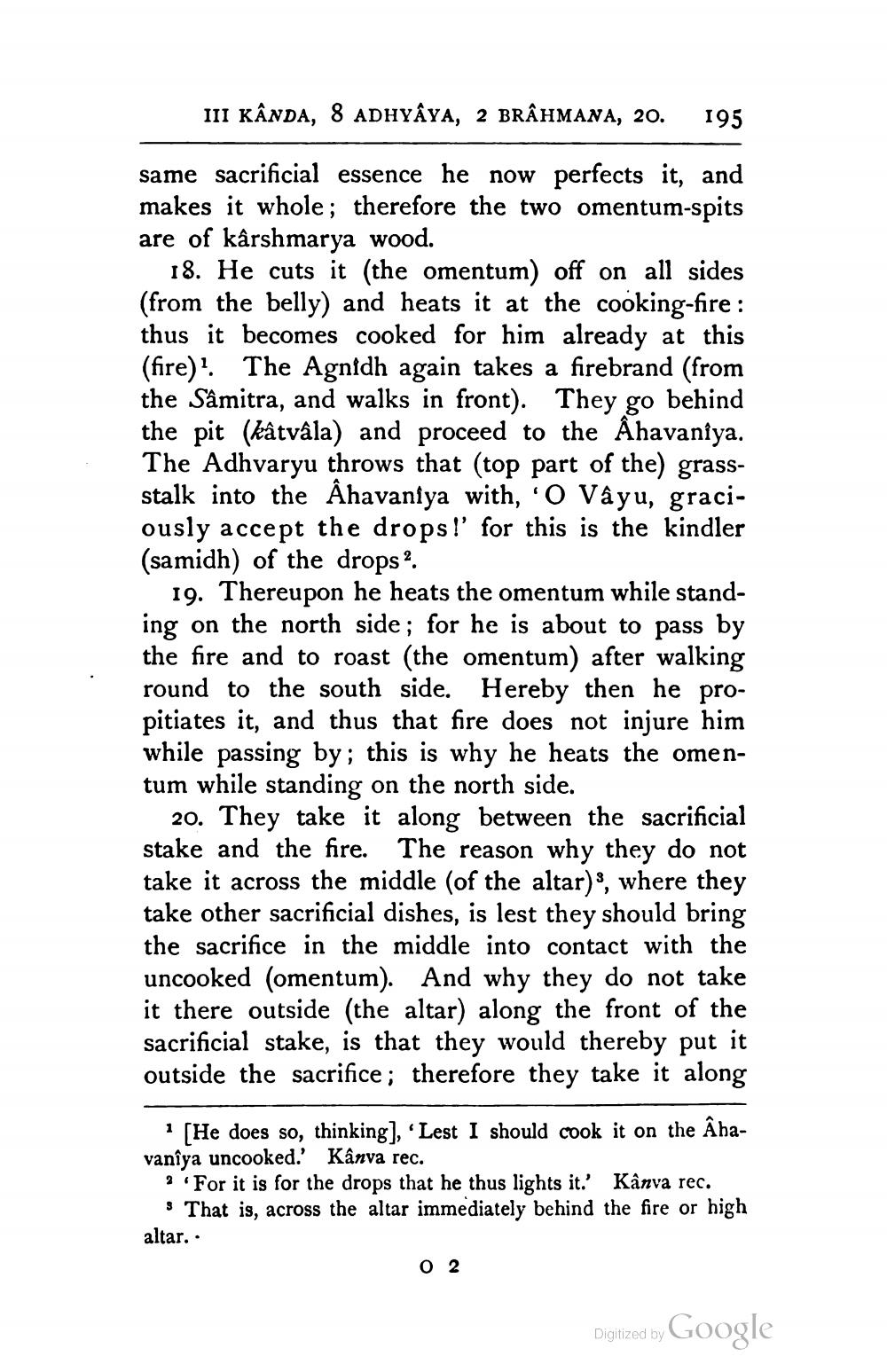________________
III KÂNDA, 8 ADHYÂYA, 2 BRÂHMANA, 20.
195
same sacrificial essence he now perfects it, and makes it whole; therefore the two omentum-spits are of kârshmarya wood.
18. He cuts it (the omentum) off on all sides (from the belly) and heats it at the cooking-fire: thus it becomes cooked for him already at this (fire)? The Agnidh again takes a firebrand (from the Sâmitra, and walks in front). They go behind the pit (kâtvâla) and proceed to the Ahavaniya, The Adhvaryu throws that (top part of the) grassstalk into the Ahavaniya with, O Vayu, graciously accept the drops!' for this is the kindler (samidh) of the drops 2.
19. Thereupon he heats the omentum while standing on the north side ; for he is about to pass by the fire and to roast (the omentum) after walking round to the south side. Hereby then he propitiates it, and thus that fire does not injure him while passing by; this is why he heats the omentum while standing on the north side.
20. They take it along between the sacrificial stake and the fire. The reason why they do not take it across the middle (of the altar), where they take other sacrificial dishes, is lest they should bring the sacrifice in the middle into contact with the uncooked (omentum). And why they do not take it there outside (the altar) along the front of the sacrificial stake, is that they would thereby put it outside the sacrifice; therefore they take it along
1 [He does so, thinking), 'Lest I should cook it on the Âhavanîya uncooked.' Kânva rec.
3. For it is for the drops that he thus lights it.' Kânva rec.
3 That is, across the altar immediately behind the fire or high altar,
02
Digitized by Google




